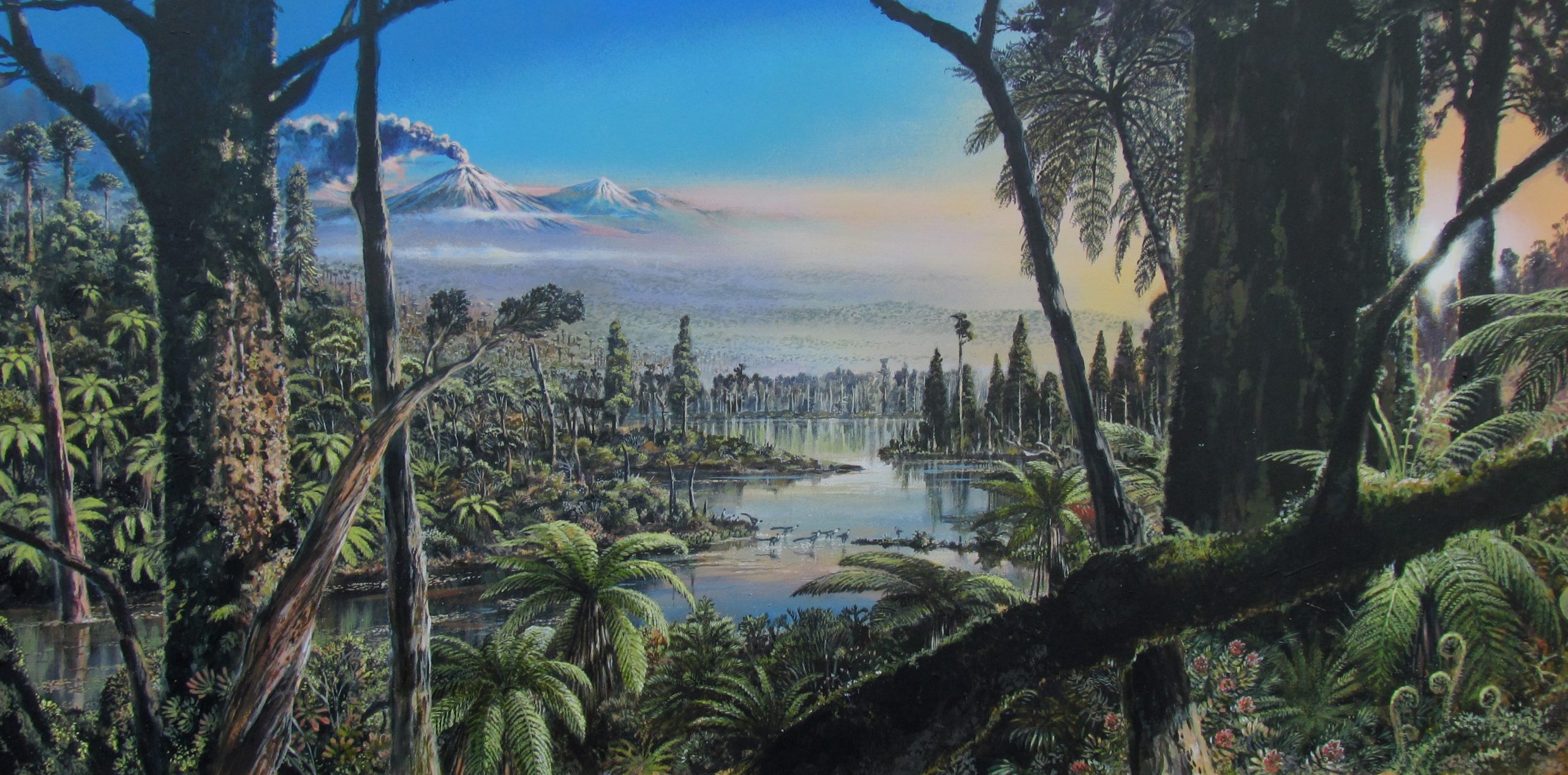The art of an ancient climate

Imagine a temperate rainforest in Antarctica, 90 million years ago. Thanks to James McKay’s illustration on the cover of Nature, you’ve got a great starting point.
James is the manager for the Centres for Doctoral Training in Low Carbon Technologies, Bioenergy and Water-WISER at Leeds but for several years he has also been using his skills as an artist to engage the public in what a low carbon future might look like. This time however, he’s been asked not to visualise the future but what our world might have looked like 90 million years ago.
Last year, James received an email from the middle of the Amundsen Sea in Antarctica. Dr Johann Philipp Klages, from the Alfred Wegener Institute, wrote to James telling him that he and his team had found fossilised evidence of a Cretaceous forest from core samples recovered from 900m deep waters off the coast. The fossil samples represent the closest point to the South Pole that Cretaceous plant fossils have ever been discovered.
They asked James to help them visualise what this ancient rainforest could have looked like to accompany a Nature paper whose co-authors include Dame Jane Francis, our Chancellor and Director of the British Antarctic Survey.
My hope is that the illustration will inspire people to find out more about our ancient climate
“The team and I had many discussions about the form and scope of this rainforest,” James said. “They gave me a list of plant species from the Cretaceous fossil samples and their idea of what modern environment might be similar. I went to Kew Gardens and museums to observe specimens and the relatives of these ancient plants. My sketches helped inform discussion, and sometimes debate, among the research team about the forest’s characteristics and structure. We drew together all the information from their research and final paper to create this visualisation of this ancient temperate rainforest.”
“My hope is that the illustration will inspire people to find out more about our ancient climate and how it can teach us about the climate change we are going through today. The authors of the paper highlight the strong greenhouse conditions that would have existed in this era and it gives us insight into the boundaries of how plants and animals can change and adapt.”
James’ medium is paint, pen and ink. His past illustrations, some of which feature in the book ‘Unlocking Sustainable Cities: a manifesto for real change’ by Professor Paul Chatterton, have been described as having almost a “dream-like” quality.
He has worked with hundreds of school children to use art to as a way to visualise and solve some of the problems we may face in the future.
“I am always blown away seeing how young people think around future problems, such as how we can we achieve a low carbon future,” James said. “Using art can give them a personal connection to a possible future and allow them to imagine it in such a way that is completely obtainable. You ask them to start with something that they know, their house, the street, their city and then to dream about the future they hope for that place. I am always really inspired by their work.”
